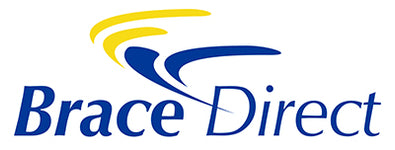M–Th 9a–11p | Fri 9a–5p
Sun 3p–11p EST
M–Th 9a–11p | Fri 9a–5p
Sun 3p–11p EST
Below you'll find out range of foot & ankle braces that can help manage Achilles tendonitis by providing support, reducing strain, and promoting healing.
.
Effective Nighttime Relief for Plantar Fasciitis & Heel Pain Say goodbye to persistent foot pain and morning stiffness caused by plantar fascii...
View full detailsNight Splint for Plantar Fasciitis Pain Relief & Improved Sleep If you suffer from plantar fasciitis, you know that the pain can be especially ...
View full details5.0 / 5.0
1 Review
Professional ankle brace with figure 8 strapping for tendonitis sprains and ankle stability Get firm, comfortable ankle support with a professional...
View full detailsEnjoy Restful Nights Free from Plantar Fasciitis Pain Ensure restorative sleep and wake up pain-free with the Brace Align Dorsal Plantar Fasciitis ...
View full details5.0 / 5.0
2 Reviews
Advanced Plantar Fasciitis Pain Relief & Heel Pain Treatment with Therapeutic Foot Support Experience premium healing from severe plantar fasci...
View full details5.0 / 5.0
1 Review
Plantar Fasciitis Brace for Effective Heel Pain Relief The Brace Align Plantar Fasciitis Air Wrap offers comfortable, targeted support for plantar ...
View full details5.0 / 5.0
1 Review
Best Athletic Ankle Brace for Basketball & Competitive Sports Elevate your game with the Brace Align Semi-Rigid Active Ankle Brace, engineered ...
View full details5.0 / 5.0
5 Reviews
Best Ultra Light Air Short Boot for Ankle Sprains and Fractures Discover the revolutionary Brace Align Ultra Light Air Short Full Shell Walking Boo...
View full details5.0 / 5.0
1 Review
Premium Relief for Plantar Fasciitis & Heel Pain Struggling with plantar fasciitis or persistent heel pain can make restful nights a challenge ...
View full details4.0 / 5.0
13 Reviews
Best Night Splint for Plantar Fasciitis Relief Nighttime foot pain and morning stiffness demand specialized therapeutic support. The Brace Direct 9...
View full detailsAdjustable Posterior Night Splint for Plantar Fasciitis and Heel Pain Relief The Brace Direct Adjustable Posterior Night Splint is designed to prov...
View full details3.7 / 5.0
3 Reviews
Best Cold Therapy Wrap for Ankle Injuries & Foot Pain Get targeted relief with the Brace Direct Ankle & Foot Gel Ice Pack, designed specifi...
View full detailsBrace Direct Cold Therapy Pads � Versatile Solutions for Targeted Cold Therapy Enhance your recovery with the Brace Direct Cold Therapy Pads, desig...
View full detailsProfessional-Grade Cold Therapy with Customizable Compression Experience advanced pain relief with the Brace Direct Cryotherapy Air Pump Ankle Foot...
View full details5.0 / 5.0
1 Review
Experience Nighttime Relief with Brace Direct's Dorsal Night Splint Say goodbye to painful mornings caused by sharp heel pain, aching arches, or st...
View full detailsQuick-Adjust Support for Active Recovery and Protection Experience effortless ankle stability with the Brace Direct Easy Lace Up Ankle Support Brac...
View full details4.8 / 5.0
37 Reviews
Brace Direct Frozen Ice Cold Therapy Machine � Includes Universal Therapy Pad The Brace Direct Frozen Ice Cold Therapy Machine offers advanced, tar...
View full detailsBest Night Splint for Plantar Fasciitis Relief Eliminate morning plantar fasciitis pain with the Brace Direct Dorsal-Posterior Dynamic Night Splint...
View full details5.0 / 5.0
1 Review
Professional-Grade Ankle Stabilizer with Dynamic Lacing System Experience maximum ankle stability with the Brace Direct Lace Up Ankle Brace with Fi...
View full details4.6 / 5.0
10 Reviews
Targeted Relief for Plantar Fasciitis and Achilles Tendonitis Discover advanced relief with the Brace Direct Plantar Fasciitis Pneumatic Foot Strap...
View full details5.0 / 5.0
1 Review
Best Plantar Fasciitis Night Splint for Fast Pain Relief End morning heel pain with the most effective plantar fasciitis night splint available. Th...
View full details5.0 / 5.0
1 Review
Deluxe Night Splint for Plantar Fasciitis & Foot Pain Relief Say goodbye to foot pain with the Brace Direct Plantar Fasciitis Premium Night Spl...
View full details5.0 / 5.0
0 Review
Professional-Grade Recovery Support for Arthritis & Post-Op Care Accelerate your healing journey with the Brace Direct Recovery Ankle Brace. En...
View full details5.0 / 5.0
2 Reviews
Optimized Comfort: Brace Direct Replacement Foam Wedge for 90� Night Splint Enhance your night's rest with Brace Direct's Replacement Foam Wedge, t...
View full detailsMonday-Thursday: 9am-11pm
Friday: 9am-5pm
Sunday: 3pm-11pm
